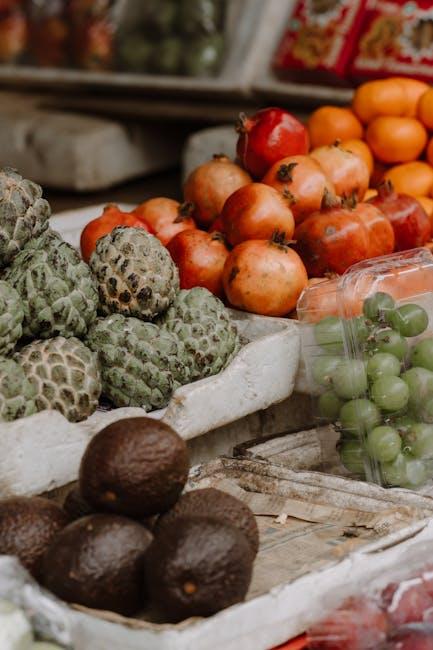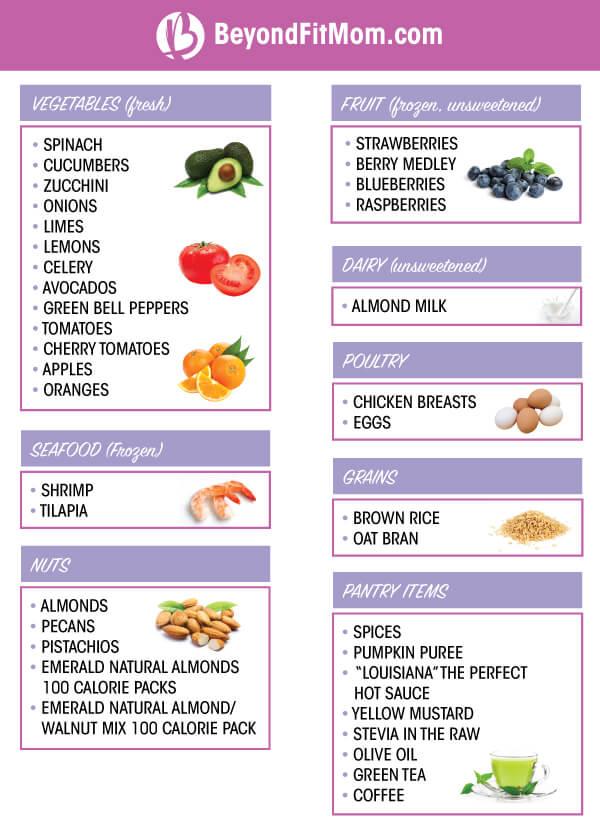In a world where convenience often trumps nutrition, the allure of processed foods is hard to resist. They line our grocery store shelves, promising quick meals and tasty treats, yet often come with a hidden cost to our health. As we become more aware of the impacts of these heavily modified foods, many are seeking a path back to simpler, more wholesome eating habits. This article embarks on a journey to explore practical steps for reducing processed foods in our daily diets. Whether you’re a seasoned health enthusiast or someone just beginning to question the contents of your pantry, these strategies offer a balanced approach to embracing fresher, more natural choices. Let’s delve into the art of mindful eating, where the goal is not deprivation, but a nourishing transformation that can seamlessly integrate into any lifestyle.
Rethinking Your Pantry: Stocking Up on Whole Foods
Transforming your pantry into a haven of whole foods doesn’t have to be a daunting task. Begin by evaluating the current contents and identifying the most processed items. These are often the culprits that add unnecessary sugars, sodium, and preservatives to your diet. Swap out these items for natural alternatives that offer both flavor and nutrition. For example:
- Refined grains: Replace white rice and pasta with quinoa, brown rice, or whole-grain pasta.
- Sugary snacks: Opt for nuts, seeds, or dried fruits without added sugars.
- Condiments: Choose sauces and dressings made from natural ingredients, or try making your own.
Incorporate a variety of fresh produce, lean proteins, and healthy fats into your pantry staples. Think of versatile ingredients like beans, lentils, and whole grains that can serve as the foundation for numerous meals. By keeping these basics on hand, you can whip up nutritious dishes without the need for processed shortcuts. Prioritize organic and local products when possible, as they not only support sustainable practices but often come packed with more nutrients and flavor.
Mastering Meal Prep: Creating Nutritious Homemade Alternatives
Transforming your kitchen into a haven for homemade goodness begins with thoughtful planning and creativity. Start by identifying the processed foods you frequently rely on, and explore healthier, homemade alternatives. Whole grains, such as quinoa or brown rice, can easily replace processed pasta or bread. For those who love a crunchy snack, consider roasting chickpeas or preparing homemade kale chips seasoned with your favorite spices.
To ensure your meals are not only nutritious but also convenient, embrace the art of batch cooking. Prepare a variety of bases like grilled chicken, roasted vegetables, and quinoa salads at the start of the week. This allows you to mix and match components for quick, satisfying meals. Moreover, crafting your own sauces and dressings from ingredients like olive oil, lemon juice, and fresh herbs not only reduces your intake of preservatives but also enhances the flavor profile of your dishes. By incorporating these simple strategies, you can gradually minimize processed foods and enjoy a more wholesome diet.

Navigating Grocery Aisles: Tips for Making Healthier Choices
When wandering through the labyrinth of shelves and enticing displays, making healthier choices can sometimes feel like a daunting quest. However, by honing in on a few practical steps, you can transform your grocery shopping experience into a rewarding journey towards well-being. Begin by focusing on the perimeter of the store where fresh produce, dairy, and proteins typically reside. This simple shift in strategy helps you naturally limit exposure to highly processed foods that often dominate the center aisles.
Consider creating a shopping list that emphasizes whole foods and minimally processed options. As you peruse labels, prioritize items with short ingredient lists and those free from artificial additives. Keep an eye out for these guiding principles:
- Opt for whole grains: Choose brown rice, quinoa, or whole wheat bread over refined grains.
- Select lean proteins: Incorporate more fish, poultry, and plant-based proteins like beans and lentils.
- Stock up on fresh produce: Aim to fill half your cart with a colorful variety of fruits and vegetables.
- Mindful snacking: Choose nuts, seeds, or yogurt instead of chips and candy.
By consciously steering your cart towards these healthier choices, you can navigate the grocery aisles with confidence and purpose.

Mindful Eating: Cultivating Awareness to Minimize Processed Foods
Incorporating mindfulness into your eating habits can be a powerful tool in reducing your reliance on processed foods. By paying close attention to the flavors, textures, and aromas of whole foods, you create a deeper connection with what you eat. This practice encourages you to savor each bite, allowing you to recognize and appreciate the natural qualities of fresh ingredients. Mindful eating isn’t about restriction; it’s about embracing the present moment and making conscious choices that support your health and well-being.
- Listen to your body: Tune into your hunger and fullness cues. This helps you differentiate between physical hunger and emotional eating.
- Engage your senses: Before eating, take a moment to observe your food. Notice its colors, shapes, and smells, enhancing your appreciation for the meal.
- Slow down: Eat at a leisurely pace to fully enjoy your food and give your body time to signal when it’s satisfied.
- Set an intention: Before starting your meal, set a clear intention to choose nourishing, minimally processed foods.
By embracing these practices, you cultivate an environment where processed foods naturally become less appealing, and whole foods take center stage in your diet. This shift not only benefits your physical health but also enriches your relationship with food.
To Conclude
In the journey toward a healthier lifestyle, the path to reducing processed foods is paved with conscious choices and small, consistent changes. By embracing whole foods, reading labels with a discerning eye, and cultivating a mindful approach to eating, we empower ourselves to nourish both body and spirit. As you embark on this transformative journey, remember that every step counts, and each decision is a step closer to a more vibrant and balanced life. Let the joy of wholesome eating inspire you to explore, create, and savor the natural bounty that fuels our existence. Here’s to a future filled with health, vitality, and the simple pleasures of real food.


































